Making the Most of Your Most Restrictive Environment
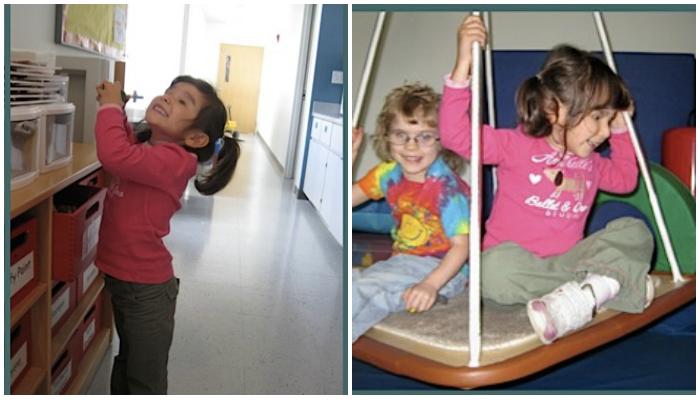
By Megan E.
Every year, without fail, we hear the same required statement at Ava’s IEP meeting: the choice that we have made for our daughter’s preschool experience (The Western Pennsylvania School for Blind Children) is, indeed, the most restrictive educational environment for her.
Children with disabilities should be educated with their peers in the regular classroom whenever possible. However, to us, this wonderful school was made for Ava, or at least for her at this point in her life. Next year, she will transition to our local school district for Kindergarten.
But with that transition in mind, we approached Ava’s school and asked how they could help Ava get ready for Kindergarten in a mainstream school. Even if your child needs to receive services at a residential facility or a nonpublic school placement, appropriate opportunities for participation in regular education programs and activities should still be made, and this can help them transition into community-based programs if that’s planned for their future.
We all know that we want our children with visual impairments to have access to the same experiences as their “typical” peers (aka: a community preschool), but for us, choosing WPSBC meant that Ava would have an experienced TVI, tons of PT, O&M, Speech, and that the faculty there would know her and understand her. It did not seem very restrictive to us; in fact, it felt liberating.
She is a Braille reader and we were especially concerned that she would not receive enough Braille instruction in a community preschool, where a TVI might only visit a few times a week… or less. Nevertheless, just because we chose the most restrictive environment doesn’t mean that the school itself can’t do more to make the environment less restricting.
Discovering possibilities that would enhance Ava’s preschool experience went beyond her IEP goals. This process truly began for us last January, at our annual IEP meeting. I expressed explicitly to the director and Ava’s teacher that my husband and I were in favor of the school developing a classroom full of kids whose ultimate goal was to transition out of WPSBC and into their local school district.
Knowing that this may not be the most popular educational theory, I wanted the school to know that this was something that we supported and were excited about. We were not promised anything at that time, but were told before the school year began that our desired classroom environment for Ava was a reality. Ava’s current class has six students, all of whom have the potential for transitioning into a “regular” classroom. The students are diverse in their abilities and needs, but they do share that one very important goal.
When Ava’s teacher told me that the classroom grouping was a go, she also laid out her overall plan for the kids: a theme each month with corresponding activities that touched on more academic subjects like early math, science and literacy, an emphasis on cooperative learning and group projects, corresponding community-based field trips once a month to reinforce the concepts/themes and practical things that every kindergartener needs to know, like lining up at the door, taking off your jacket and hanging it up, hygiene and self-help skills. There was also to be an emphasis on getting the kids out in the community as much as possible, as well as blending them with typical peers.
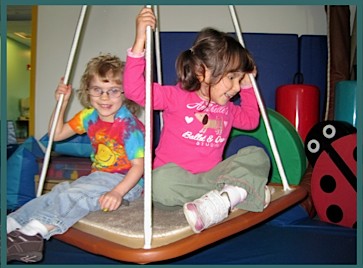 The benefits of this grouping have been emerging since school began this year. There are now six very active children in Ava’s classroom, who are all verbal and mobile. Again, their diagnoses differ – Ava and one other little boy are the only totally blind children in the class – but their strengths are similar. Not only does room 302 look different this year, with very efficient areas for circle time, story time, pretend play and mealtime, it also feels different. It is a lively preschool classroom full of children who are learning the things necessary for kindergarten: raising your hand, following the rules, taking turns, working together, and best of all, how to play together and communicate with a friend. It is the right combination of what Ava might have gotten in a community preschool, along with the intensive support from Ava’s team that only the WPSBC environment could provide.
The benefits of this grouping have been emerging since school began this year. There are now six very active children in Ava’s classroom, who are all verbal and mobile. Again, their diagnoses differ – Ava and one other little boy are the only totally blind children in the class – but their strengths are similar. Not only does room 302 look different this year, with very efficient areas for circle time, story time, pretend play and mealtime, it also feels different. It is a lively preschool classroom full of children who are learning the things necessary for kindergarten: raising your hand, following the rules, taking turns, working together, and best of all, how to play together and communicate with a friend. It is the right combination of what Ava might have gotten in a community preschool, along with the intensive support from Ava’s team that only the WPSBC environment could provide.
I admit that socialization was a huge motivation for me to push for this type of classroom. I know that next year, there will be 15 or more active, talkative kindergarteners in Ava’s classroom. How would she ever deal with that kind of commotion if she didn’t experience some of it this year? How would she make a friend? The benefits are showing already. Ava is experiencing a sort of social awakening this year, asking more about what her other classmates are doing, why they are doing such things, and getting lots of responses to her questions and suggestions. I think that it shocked her a little at first – who were these kids and why were they so… loud? Excited? In-my-face? Ava is experiencing all of these things and she is growing so much. I am even becoming more comfortable with the idea of kindergarten next year, something that used to scare the heck out of me!
In addition to Ava’s placement in this “transitional” class, she participates regularly in the Blending Program at her school, which brings together children from WPSBC and the Bright Horizons preschool, housed in the same building as Ava’s classroom. The children get together to play and eat lunch, attend Creative Arts series performances and attend a Creative Movement class together.
What are your opinions on grouping students together by this kind of goal? There are many opinions, but I feel confident that we’ve made the right choice in supporting this option. I look forward to the rest of this school year and to experiencing more of the benefits of this unique classroom and can’t wait to see how our little girl thrives in kindergarten!
What is the Least Restrictive Environment?
- A student who has a disability should have the opportunity to be educated with non-disabled peers, to the greatest extent possible
- They should have access to the general education curriculum, extracurricular activities, or any other programs that non-disabled peers would be able to access
- Students should be provided with supplementary aids and services necessary to achieve educational goals if placed in a setting with non-disabled peers.
For more information on the Least Restrictive Environment rule (LRE), visit the government’s page on the Individuals with Disabilities Education Act (IDEA).
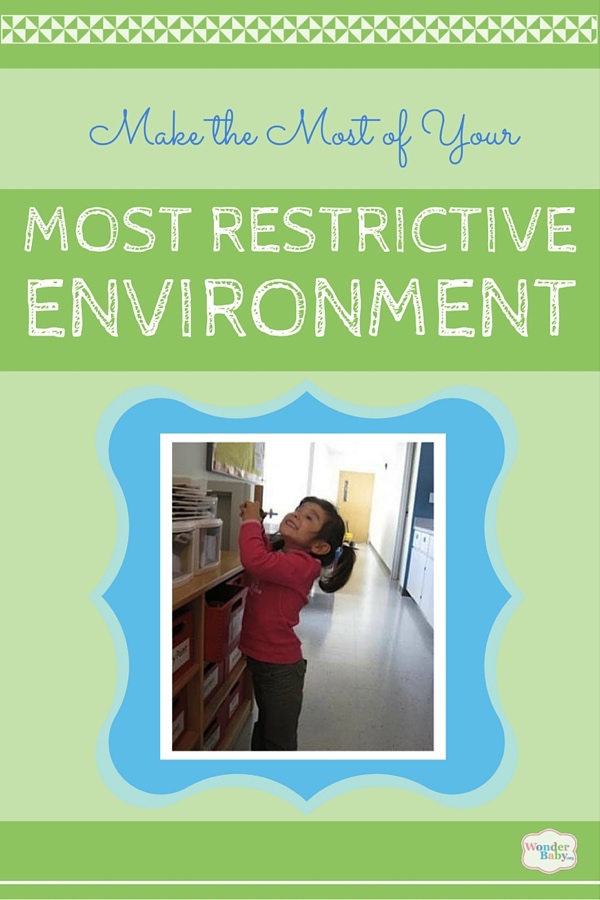
Related Posts
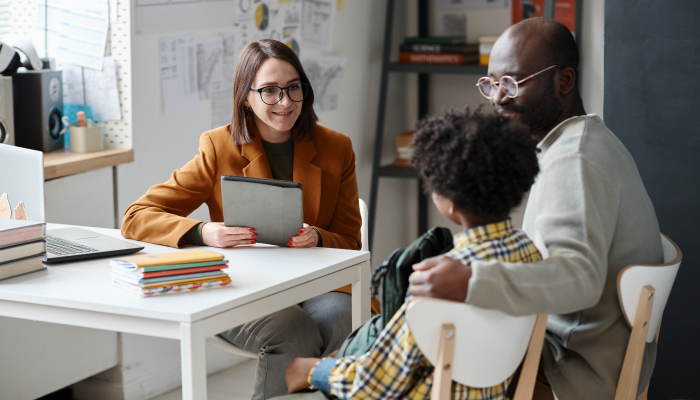
IEPs
What Should I Bring to My Child’s First IEP Meeting?
Prepare for your child's first IEP meeting with confidence! Discover exactly what documents to bring, including educational records, medical info, and questions to ask.
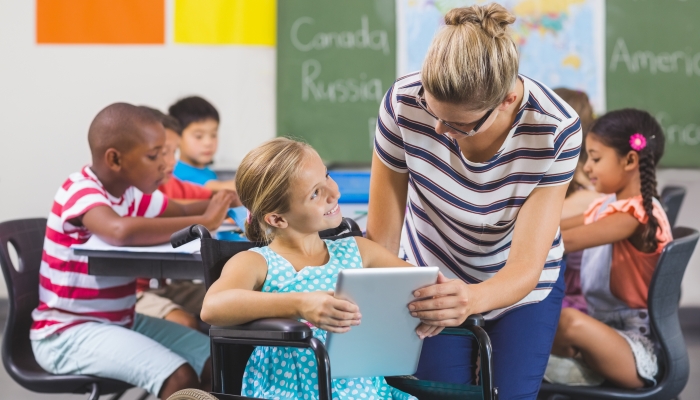
IEPs, Special Needs
What Is an Out-of-District Placement, and Who Needs One?
Learn all about out-of-district placement, which is ideal for a child whose individual needs are not met by their current school district.
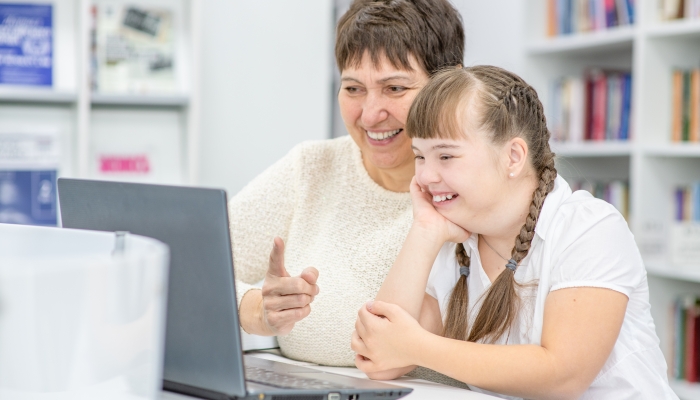
IEPs, Special Needs
5 Ways AI Can Benefit Special Needs Students
AI in special education classrooms can help create highly personalized experiences and improve inclusivity. Read about more benefits here!